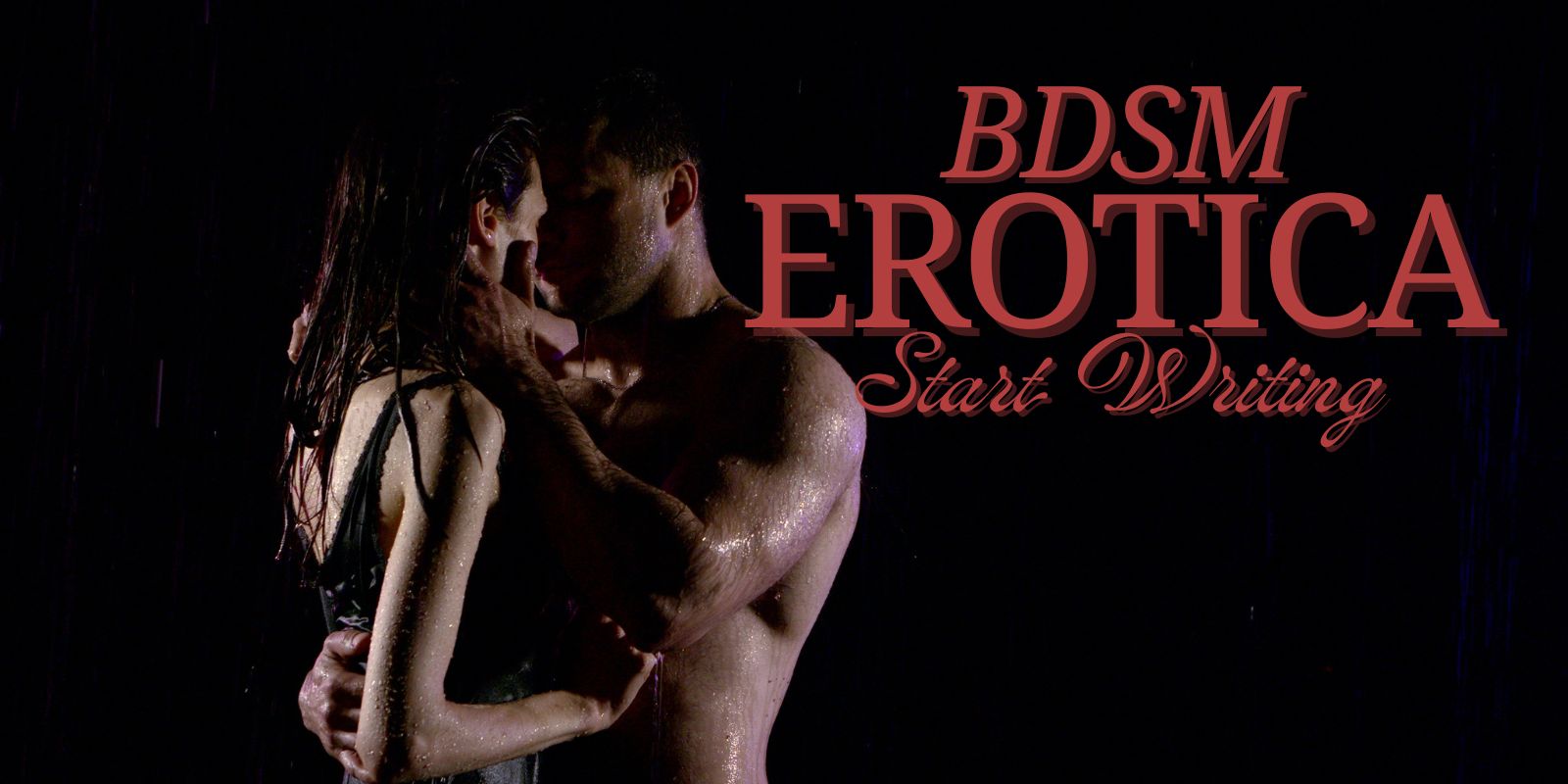Writing BDSM Erotica: Realism, Fantasy, and Responsible Creativity
Writing BDSM Erotica rewards careful craft. It asks for respect, study, and a steady focus on consent. With the right approach, you can thrill readers while staying true to kink culture.
This guide shows how to balance fantasy with real practice. You will learn how to shape characters, set risk aware scenes, and write heat that earns every beat.
Table of Contents
- What Is BDSM Erotica?
- Balancing Realism and Fantasy
- Building Authentic Characters
- Using Consent and Safety in Storytelling
- Tips for First-Time Writers
- Tools and Resources for Writers
- Key Takeaways
- FAQ: Writing BDSM Erotica
What Is BDSM Erotica?
Writing BDSM Erotica is fiction that centers on power exchange, kink play, and the emotions that surround them. It stands on consent, trust, and care. The stories invite readers into scenes where limits are known, roles are chosen, and desire meets skill. The more grounded the craft, the more vivid the heat feels on the page.
This genre covers many interests. You might write rope, impact, service, chastity, or sensory play. Each calls for clear setup and safe context. Negotiation comes first. Readers should see characters agree on limits and signals. Aftercare closes the arc, showing the return to calm and care. These steps do not slow the story. They raise the charge because risk is now understood.
Strong pieces use character goals to drive every scene. A dominant may seek control to feel steady. A submissive may chase release or structure. Conflicts rise from these goals, not from random pain. Language also matters. Use precise terms for tools and actions. Show sensation with body cues, breath, and timing. Keep sentences tight so the rhythm pulls the reader ahead. When craft and care align, the result is erotic, honest, and memorable.
Balancing Realism and Fantasy
Writing BDSM Erotica works best when realism and fantasy support each other. The scenes need to be believable enough to carry weight, but also heightened enough to excite. If the balance tips too far toward fantasy, the work risks feeling shallow or unsafe. If it leans only on realism, the story may read more like a manual than erotica. The craft lies in holding both together.
Writers often struggle with where to draw the line. The answer is to ground fiction in authentic details—like how a flogger feels on skin or the rituals of negotiation—while shaping those moments into a story that still pushes desire. Articles like this piece from Writer’s Digest highlight how the heart of BDSM writing is emotional truth. Readers respond when the fantasy flows from the characters’ needs and limits, not just the tools in play.
Realism also comes from respecting consent. Showing characters plan, talk, and check in makes the heat stronger, not weaker. Readers want to see that trust is earned before a rope tightens or a cane lands. The fantasy element then becomes the intensity of the moment—the heightened sensation, the deepened surrender, the boldness of the scene. When realism and fantasy move together, BDSM Erotica feels both thrilling and responsible.
Building Authentic Characters
Writing BDSM Erotica works best when characters feel real and not like clichés. Readers want people with depth, not cardboard cut-outs. A dominant should carry motivation, not just harshness. A submissive should show desire and limits, not blind obedience. Guidance from BDSM and Mental Health shows how kink can affect mood and well-being, and this adds dimension to how characters are written.
- Have clear goals and inner drives.
- Show both strengths and vulnerabilities.
- Use dialogue to reveal personality and emotion.
- Connect their kink interests to wider life or growth.
Flat or unrealistic characters weaken the impact of a scene. Readers lose interest if people feel one-dimensional or act without reason. To keep writing strong, avoid reducing characters to stereotypes or pushing them into unsafe situations without context.
- Avoid “all-powerful dom” or “mindless sub” clichés.
- Do not skip negotiation or consent in the story.
- Avoid sudden extreme acts without buildup or reason.
- Don’t ignore aftercare or emotional fallout when it matters.
Using Consent and Safety in Storytelling
Writing BDSM Erotica is most powerful when it shows how trust builds before the scene begins. Readers want heat, but they also want to believe the play is safe. By weaving in consent and safety, the story gains weight and realism. Showing negotiation or simple agreements makes the fantasy more exciting, not less, because it proves the power exchange is chosen.
One way to strengthen this is to illustrate consent in action. A nod, a whispered safe word, or a dominant checking in mid-scene can heighten intimacy. As Acme Melody notes, the challenge is to balance realism with fantasy. That means respecting how kink works in real life while still heightening sensation for the reader. Including aftercare closes the loop, showing how characters recover together. This approach not only keeps readers engaged but also keeps the story grounded in values that matter in kink culture.
Tips for First-Time Writers
Writing BDSM Erotica for the first time can feel daunting. New writers often focus too much on the kink and forget the human element. Readers want heat, but they also want to connect with characters who feel real. Respect for consent, dialogue that shows personality, and careful pacing all help make a scene come alive. Learning the basics of BDSM Etiquette can also guide your writing toward safer and more believable stories.
When I began writing, I learned quickly that realism matters more than showing off every tool or act. My most engaging work has always come from building trust and letting the tension rise slowly. Scenes breathe better when consent, care, and character drive the action. If you’re starting out, write what feels true rather than what seems shocking. The intensity comes from trust earned on the page, not from stacking extremes too fast.
Tools and Resources for Writers
Good tools help make Writing BDSM Erotica more vivid. Writers often draw inspiration from the same items used in kink. Exploring how restraints, blindfolds, or vibrators change mood and sensation adds texture to a scene. Products like the Sex Therapy Kit for Lovers can spark ideas by reminding you of the rituals, pacing, and variety that play can bring. Looking at tools through a writer’s eyes helps keep the descriptions fresh and engaging.
Writers can also learn by reading about specific practices. For example, Sensory Deprivation offers insight into how limiting one sense heightens another. Using resources like this makes it easier to write scenes that are grounded in realistic play, while still carrying the intensity that readers crave. Tools and references, whether physical or written, make fiction sharper, more layered, and more memorable.

Key Takeaways – Writing BDSM Erotica
- Writing BDSM Erotica works best when realism and fantasy support each other.
- Authentic characters drive desire more than extreme acts or stereotypes.
- Consent, trust, and aftercare make scenes hotter and more believable.
- Author insight: my strongest stories grew from lived BDSM practice, not imagination alone.
- Practical tools and kink guides help bring texture and accuracy to writing.
FAQ: Writing BDSM Erotica
Do I need personal BDSM experience to write erotica?
No. Research and respect go a long way. Focus on realism, safety, and emotional truth to connect with readers.
How much detail should I include about tools?
Enough to show impact, but not so much it feels like a manual. Use tools to support the story, not replace it.
Can beginners write convincing BDSM Erotica?
Yes. Start with clear consent and realistic character goals. Readers value authenticity over extreme or unsafe fantasy.
What’s the biggest mistake new writers make?
Skipping negotiation and aftercare. Without them, the story feels flat or unsafe. Show trust and care to heighten the heat.
How do I keep stories fresh for readers?
Explore different kinks, vary emotional stakes, and rotate perspectives. Use research and personal insight to avoid repetition.

BDADSMS is a seasoned BDSM guru known for sharing grounded, experience-based guidance on dominance, submission, kink safety, and power exchange dynamics.



